Approximately 200 jade artifacts from the 18th and 19th centuries were introduced to the public for the first time at the exhibition “Jade Forms,” held on August 30.
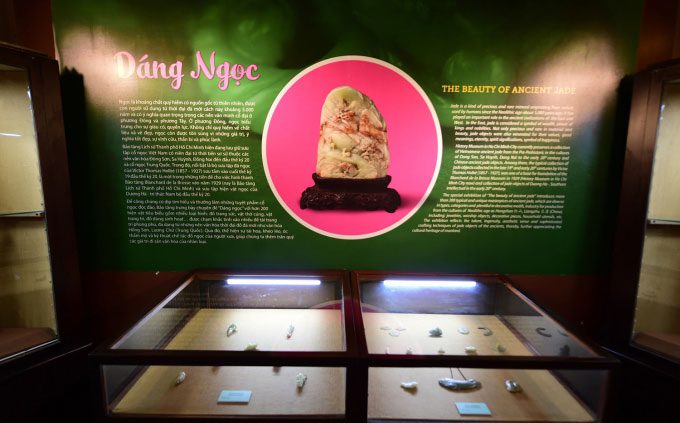
The exhibition was organized by the Ho Chi Minh City Museum of History to celebrate its 43rd anniversary.
The event displayed 221 artifacts from various cultures including China, Vietnam, Japan, Thailand, and Laos, with the majority being jade artifacts from China. About 80% of the items were presented for the first time in the country. The two main collections featured in the exhibition are the jade collection of Victor Thomas Holbé (1857-1927), gathered from the late 19th to early 20th centuries, and the collection of Dr. Duong Quynh Hoa (Minister of Health of the Provisional Government of the Republic of South Vietnam), collected in the 1930s and 1940s.
According to Mr. Hoang Anh Tuan, Director of the Ho Chi Minh City Museum of History, jade in Eastern culture symbolizes wealth and power. Jade artifacts are often revered for their meanings of eternity, mystique, and blessings. “We organized this exhibition on jade artifacts because Mr. Victor Thomas Holbé’s collection was the foundation for establishing the Blanchard de la Brosse Museum, the predecessor of the Ho Chi Minh City Museum of History today,” Mr. Tuan stated. In 2021, the museum also introduced jade collections but in an online format.
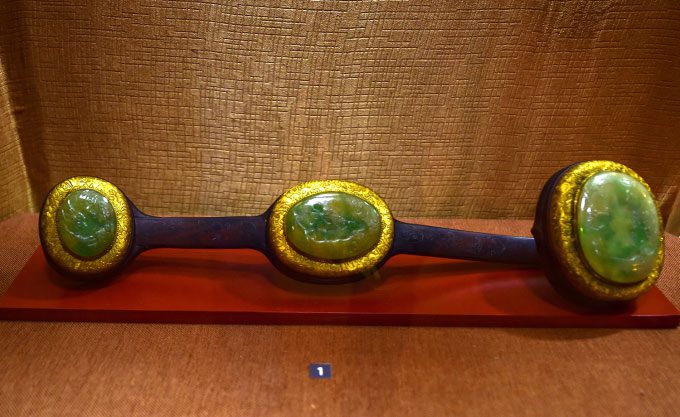
The Ruyi Scepter represents the power and status of ancient people. During the feudal period, the jade Ruyi was a symbolic item of emperors and the aristocracy, believed to bring wealth and good fortune to its owner. Chinese regulations during the Ming and Qing dynasties stipulated that the emperor held the Zhenkui, while vassals held the Ruyi. In Vietnam, during the Nguyen dynasty, the Ruyi was also an inseparable item of the Crown Prince. The scepter typically had a curved shape and featured rich patterns such as orchid pots – symbolizing integrity and nobility, deer, cranes, and reishi mushrooms – which represented blessings and longevity.
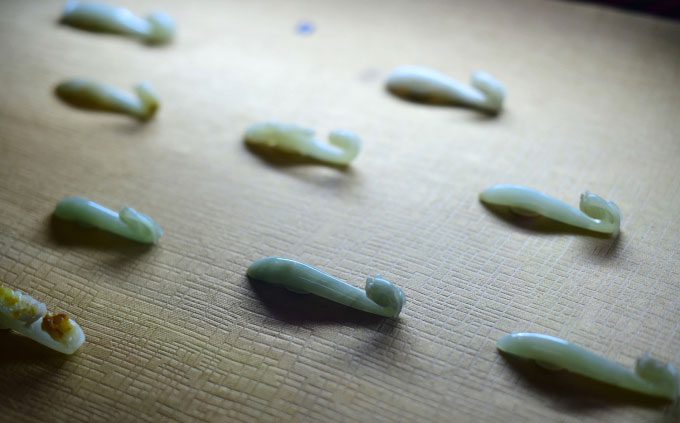
The Jade Belt Hook is another artifact that attracts visitors. Belt hooks originated during the Spring and Autumn period (772-481 BC) in China, symbolizing the wealth of their owners. They were made from various materials such as crystal, agate, jade, gold, and silver. After being replaced by belt buckles, belt hooks became popular again during the Ming (1368-1644) and Qing (1644-1911) dynasties among those who appreciated ancient culture. During this period, hooks were often made from white jade, intricately carved with images of the Hongshan dragon and Chihu tiger, often bestowed by the emperor to loyal ministers.
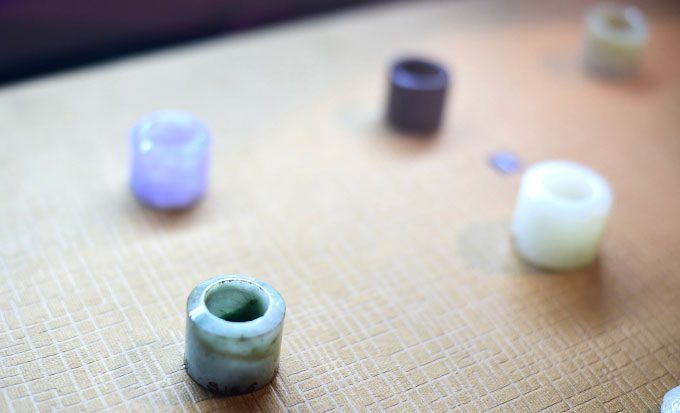
The Archery Ring was traditionally associated with archers in ancient China. The ring was worn on the thumb of the bowstring hand. Aside from protecting the finger, the ring helped control the string accurately, enabling archers to hit targets while riding at high speeds. By the late 18th century, during the Qing dynasty, archery lost its prominence, and the archery ring gradually became a form of jewelry, symbolizing the powerful.
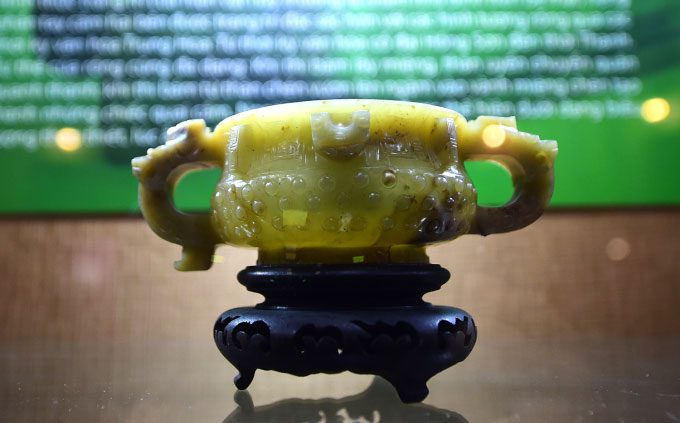
The Ritual Vessel (in Chinese, Qì) features handles adorned with dragon motifs. This artifact was once used to hold rice, noodles, and other foods in ritual ceremonies. The patterns on the artifact reflect various cultural periods, from the ancient Hongshan era to the Qing dynasty. The dragon’s postures are diverse, sometimes clinging to the mouth of the vessel, gracefully winding around its body, or climbing up to hold onto the rim.
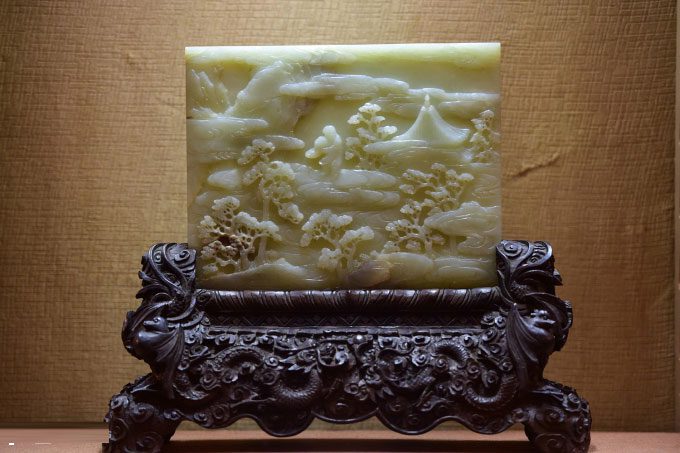
The Windbreak was used to block wind and light, made from various materials including jade, enamel, brick, and wood. Not only significant in feng shui, windbreaks were also used for interior decoration. With jade as the material, artisans often carved ancient cultural motifs from China, inscribing Chinese calligraphy, Buddhist scriptures, and then polishing them to showcase the stone’s veining patterns.

Artifacts included in the Four Treasures of the Study such as pen holders were often intricately carved with dragon and plant themes.

The Jade Pendant features a chain designed for natural interlocking of the hooks.
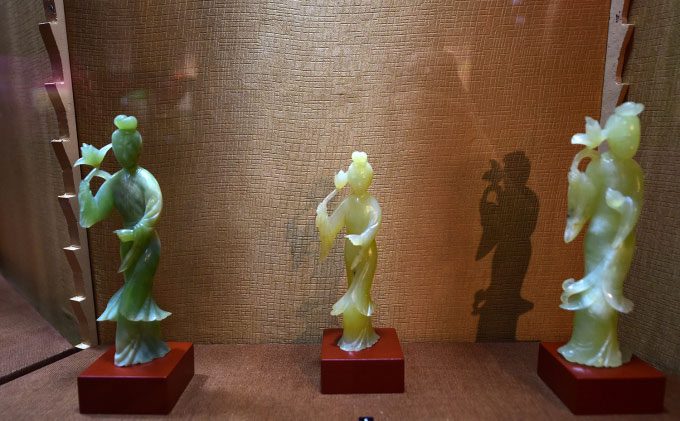
Fairy Statues were highly praised by experts for their sculptural quality.

Many artifacts were displayed alongside ancient sayings and couplets.
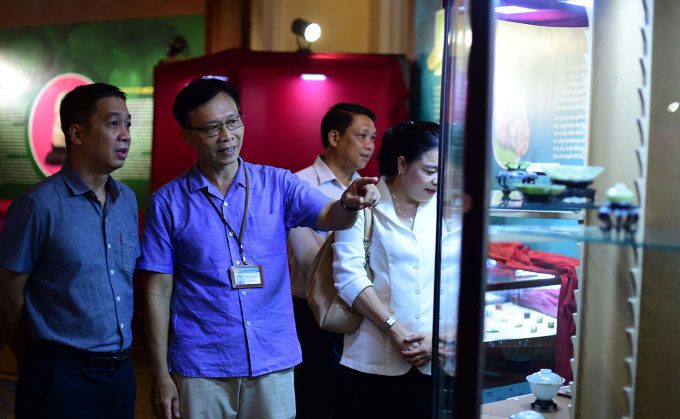
Mr. Hoang Anh Tuan (in a blue shirt) – Director of the Ho Chi Minh City Museum of History – introduced each artifact to the guests. The organizers hope the event will help the public gain a deeper understanding of the craftsmanship of ancient jade artisans, thereby appreciating the cultural heritage of humanity.
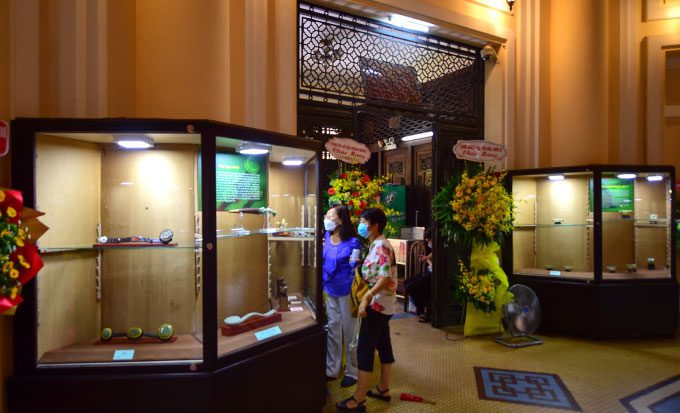
The exhibition, which is open until November 30, is divided into six sections featuring six groups of artifacts, including ritual grain vessels, items for worship, the Four Treasures of the Study, windbreaks, items representing power (jade scepters, archery rings), and others (seals, jade pendants).


















































